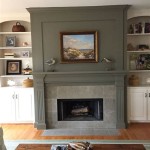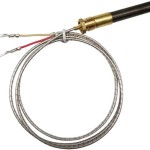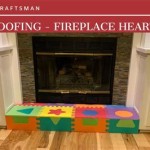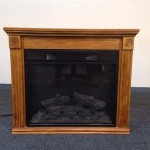Installing a Wood Stove Insert Into an Existing Fireplace: A Comprehensive Guide
Installing a wood stove insert into an existing fireplace can be a worthwhile home improvement project. It transforms a potentially inefficient, open-hearth fireplace into a more effective heating source. Wood stove inserts are designed to burn wood more efficiently, providing greater warmth and reducing emissions compared to traditional fireplaces. However, the installation process requires careful planning, adherence to safety regulations, and, in some cases, professional expertise.
This article provides a comprehensive guide to understanding the typical steps involved in installing a wood stove insert into an existing fireplace. It is essential to note that local building codes and insurance requirements can vary significantly. Therefore, consulting with local authorities and a qualified professional before commencing any work is highly recommended. Adhering to manufacturer’s instructions is paramount for safe and efficient operation of the wood stove insert.
Assessing Fireplace Compatibility and Requirements
Before considering the purchase and installation of a wood stove insert, a thorough assessment of the existing fireplace is crucial. This assessment involves several key factors that determine the suitability of the fireplace for the intended modification.
Firstly, the dimensions of the fireplace opening must be carefully measured. The height, width, and depth of the firebox must be sufficient to accommodate the specific wood stove insert being considered. Manufacturers provide detailed specifications outlining the minimum opening requirements for their products. Exceeding these limitations is both vital for safe effective ventilation and may void the warranty.
Secondly, the condition of the existing chimney must be evaluated. A chimney inspection by a qualified professional is highly recommended. The chimney should be structurally sound and free from cracks, deterioration, or blockages. Creosote buildup, common in wood-burning fireplaces, must be thoroughly cleaned prior to installation. In many cases, a new stainless steel chimney liner will be required to ensure proper draft and to meet current safety standards. The diameter of the liner should match the stove insert's flue outlet size. A damaged or inadequate chimney can significantly compromise the performance and safety of the wood stove insert, potentially leading to carbon monoxide poisoning or chimney fires.
Thirdly, consider the hearth extension requirements. Building codes typically mandate a certain distance of non-combustible material extending outwards from the fireplace opening. This hearth extension protects the surrounding flooring from sparks and embers that might escape the firebox. The specific requirements vary depending on the model and type of the fireplace insert selected.
Finally, verifying local building codes is an essential step. These codes specify requirements for fireplace modifications, chimney liners, clearances to combustible materials, and other safety aspects. Obtaining the necessary permits before starting the installation is often required. Failure to comply with local codes can result in fines, delays, and even the removal of the installed insert. Consult with the local building inspector to ensure that all planned work meets the required standards.
Preparing the Fireplace and Installing the Chimney Liner
Once the assessment is completed and the necessary permits are obtained, the preparation phase begins. This involves cleaning, repairing, and modifying the existing fireplace to be ready for the wood stove insert.
The first step is a thorough cleaning of the firebox and chimney. Remove all ashes, debris, and creosote buildup. Creosote is a flammable substance that accumulates in chimneys and can cause dangerous chimney fires. Professional chimney sweeps use specialized tools to effectively remove creosote and ensure a clean chimney passage.
Next, inspect the firebox for any cracks or damage. Small cracks can often be repaired with refractory mortar, a heat-resistant material designed for patching fireboxes. Larger cracks or structural damage may require more extensive repairs, potentially involving the replacement of firebricks or other components.
Installing a new stainless steel chimney liner is often a mandatory step. The liner provides a dedicated flue passage for the wood stove insert, preventing combustion gases from leaking into the house and improving draft. The installation process involves lowering the liner down the chimney, connecting it to the stove insert's flue outlet, and sealing the connection. The liner should be insulated to improve draft and reduce creosote buildup. There are different insulation methods, including pouring vermiculite around the liner or using a pre-insulated liner. Using the correct diameter liner is crucial for the optimal function of the insert.
Before proceeding with the insert installation, remove any existing dampers. Dampers are no longer needed with a wood stove insert and can obstruct airflow. The damper can be removed entirely or, in some cases, locked in the open position.
Installing the Wood Stove Insert and Completing the Connection
With the fireplace prepared and the chimney liner installed, the final phase involves installing the wood stove insert itself and connecting it to the chimney liner. This step requires careful attention to detail and adherence to the manufacturer’s instructions.
Firstly, carefully position the wood stove insert in front of the fireplace opening. Depending on the weight of the insert, assistance may be required to maneuver it into place. Ensure that the insert is level and centered within the opening. Some models use adjustable feet to accommodate uneven hearth surfaces.
Next, connect the stove insert’s flue outlet to the previously installed chimney liner. This connection is typically made using a stove pipe adapter or a direct connection, depending on the model. Ensure a tight and secure connection to prevent leaks of combustion gases. Use high-temperature sealant to seal any gaps and to ensure an airtight seal.
Once the flue connection is complete, slide the wood stove insert into the fireplace opening. Take care not to damage the chimney liner or any surrounding materials. Follow the manufacturer’s instructions for securing the insert in place. Some models require bolting the insert to the hearth or fireplace surround.
Install any trim pieces or facing that came with the insert to cover the gap between the insert and the fireplace opening. The trim provides a finished look and helps to seal the opening. Ensure adequate clearance between the insert and any combustible materials, such as wood trim or framing. Building codes specify minimum clearance requirements to prevent fire hazards. If the clearances are not met, heat shields or other protective measures may be required.
After the installation is complete, perform a test burn to ensure that the insert is functioning correctly. Monitor the chimney for any signs of smoke leakage or draft problems. Follow the manufacturer’s instructions for operating the insert, including proper startup and shutdown procedures. Be aware of the dangers of carbon monoxide poisoning. Installing a carbon monoxide detector is essential.
Allow the insert to cool completely before cleaning or performing any maintenance. Regularly inspect the chimney and flue liner for creosote buildup. Schedule regular chimney sweeps to remove creosote and ensure that the chimney is clear and safe to use. A professional inspection is highly recommended after the first few weeks of use to verify all connections and seals.
Proper operation and regular maintenance are crucial for the safe and efficient use of a wood stove insert. Always use seasoned, dry wood to minimize creosote buildup. Avoid burning trash, paper, or other materials that can produce excessive smoke and pollutants. The wood stove insert is an efficient heating appliance when installed correctly and operated responsibly.

How To Install A Wood Burning Fireplace Insert Fireplaces Direct Learning Center
Wood Stoves And Fireplaces How To Install A Burning Fireplace Insert Hearth Com Forums Home

How To Install A Fireplace Insert Ask This Old House

How To Install A Wood Burning Fireplace Insert This Old House

Fireplace Insert Installation Wood Burning Inserts

How Fireplace Inserts Work We Love Fire

Fireplace Insert Installation Step By Forbes Home

Fireplace Insert Guide Fireplaces Direct Learning Center

Wood Burning Fireplace Inserts Insert Installation

Fireplace Inserts Everything You Need To Know Full Service Chimney
Related Posts








